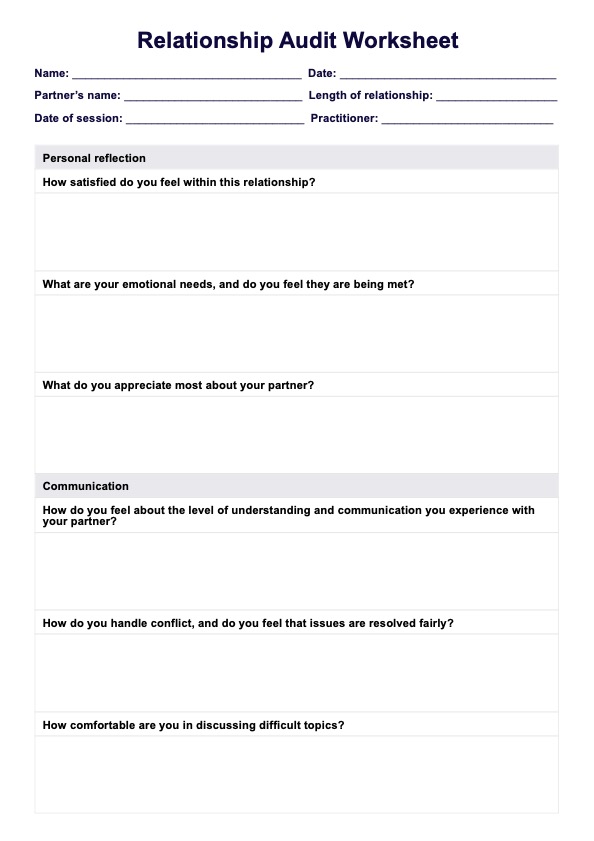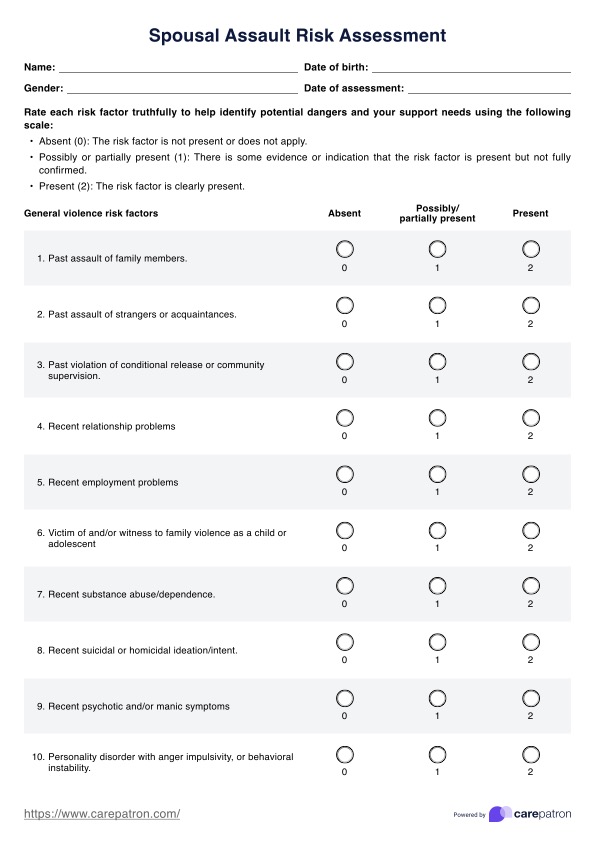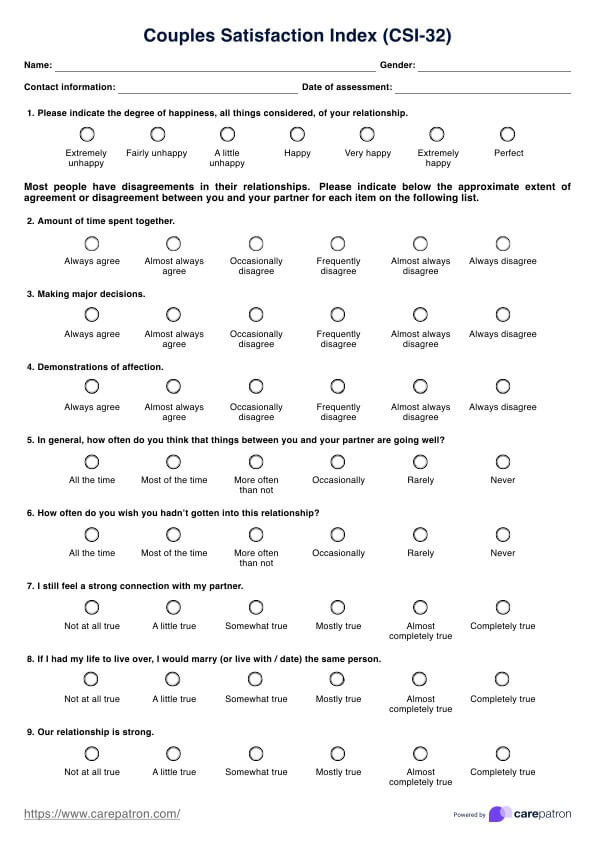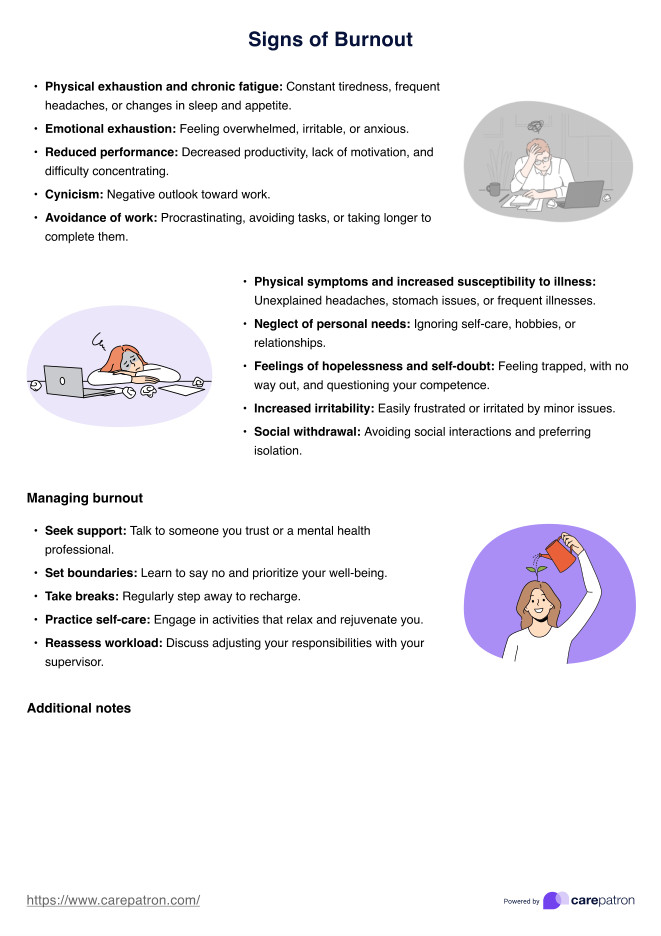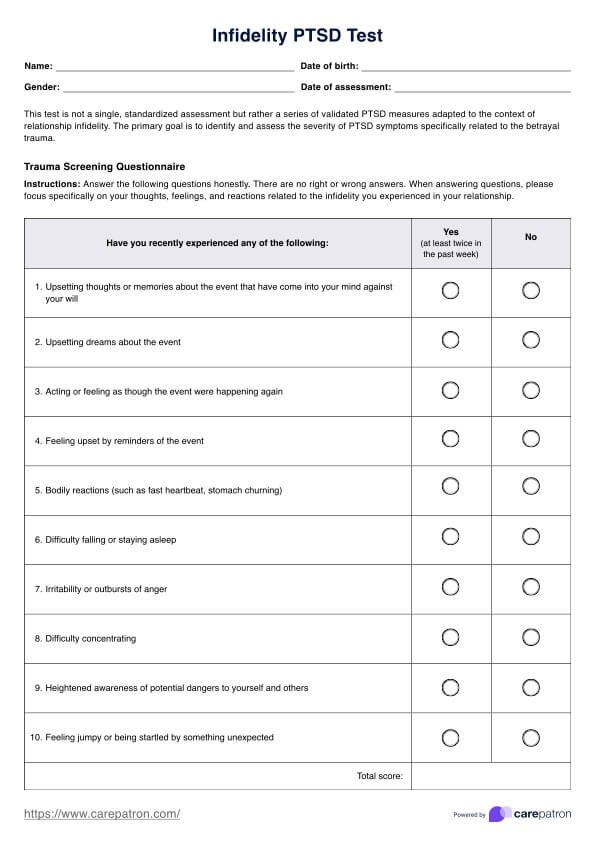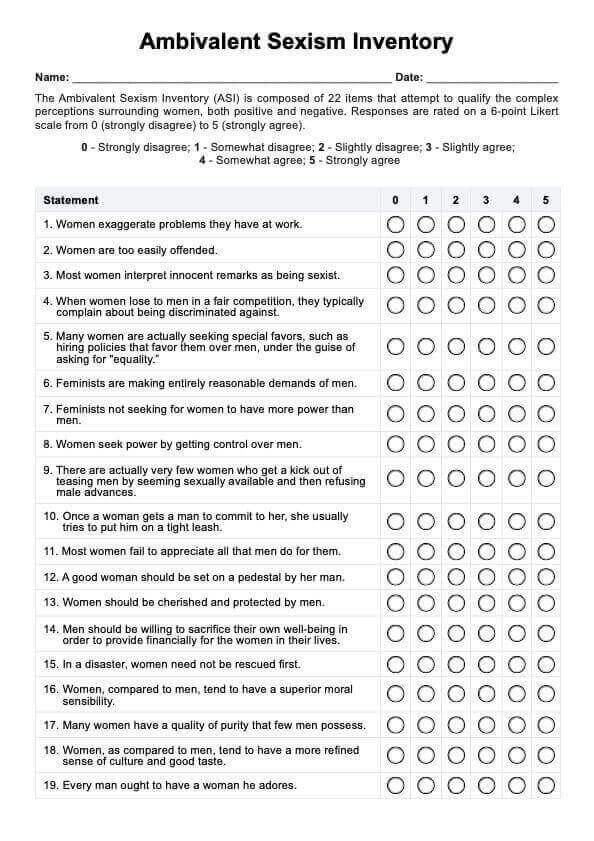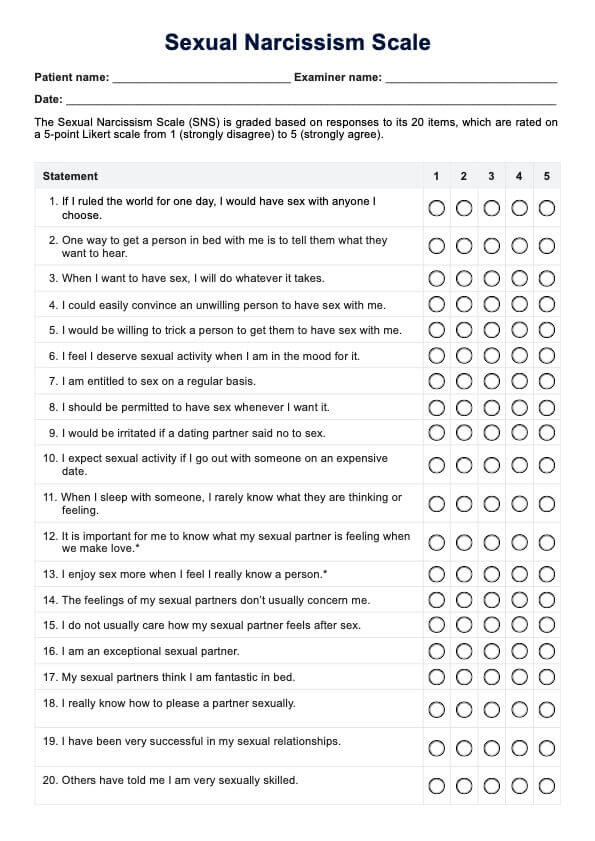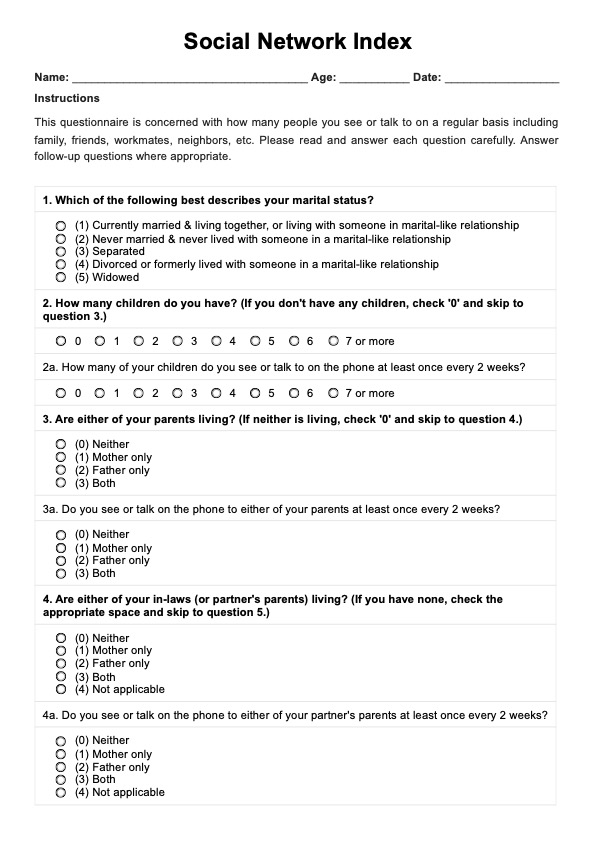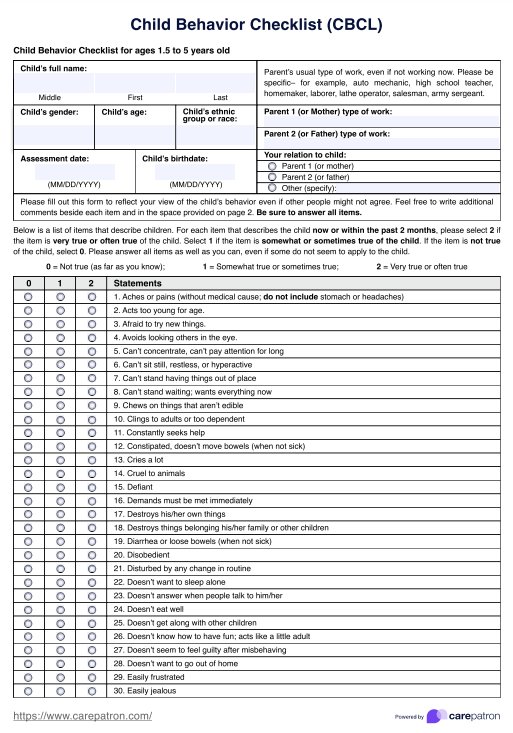Co-parenting Worksheets
Dive into effective co-parenting with Carepatron! Discover our comprehensive Co-parenting Worksheet and streamline shared parenting.


What is a Co-parenting Worksheet?
Imagine walking on a tightrope. Now, visualize that tightrope being the line of communication between two separated parents trying to raise a child together. Tricky, isn't it? Welcome to the world of co-parenting, a space that demands meticulous planning, clear communication, and unparalleled collaboration. But what if there was a tool to help smoothen this balancing act? Enter the .
A Co-parenting worksheet is not just another piece of paper; it's a roadmap to a harmonious co-parenting journey. It's designed to help separated or divorced parents collaboratively chart out the essential aspects of raising their child, ensuring clarity and minimizing conflicts. Consider it the ultimate playbook covering weekend visits, holiday schedules, school events, and medical decisions.
However, this resource's ability to foster communication is genuinely golden. It acts as a constant, open channel between parents, ensuring that both are on the same page regarding their child's well-being. Moreover, it's flexible. As your child grows and circumstances change, this worksheet can be updated to reflect the evolving dynamics and needs of the co-parenting relationship.
For those who've navigated the tumultuous waters of separation, this worksheet is like the lighthouse guiding you through foggy mornings. It paves the path for shared parenting rooted in mutual respect, understanding, and, most importantly, love for the child.
And the best part? We're offering a downloadable free PDF version for our readers. But before we get to that, let's delve deeper into how this magical worksheet works and why every co-parenting duo needs one.
Co-parenting Worksheets Template
Co-parenting Worksheets Example
How to Use the Co-parenting Worksheet
Navigating the landscape of co-parenting can be challenging. The Co-parenting Worksheet is designed to facilitate smoother communication, set clear expectations, and work towards mutual goals for the well-being of the child(ren). Below are the steps on how to utilize this worksheet effectively:
Step 1: Introduction and Setting the Scene
Begin by explaining the worksheet's purpose to both parties. Emphasize that it's a tool for clarity and is meant to foster understanding, not to place blame or pinpoint shortcomings.
Step 2: Personal Information
Complete the patient information and medical history sections. These provide context and can shed light on any specific needs or considerations that come into play during co-parenting.
Step 3: Open Communication
Encourage open and honest answers in the questions section. Understanding each parent's perspective, concerns, and aspirations regarding their co-parenting journey is crucial.
Step 4: Simulate Scenarios
Using the tests section, simulate potential scenarios both parents might face. This offers a platform to discuss possible challenges and agree on a strategy beforehand, reducing the likelihood of conflicts.
Step 5: Review and Reflect
Once the worksheet is filled out, take some time to review the answers. Look for areas of alignment and divergence. It's essential to identify these early on to address potential challenges.
Step 6: Create Action Points
Based on the findings from the review, note down actionable steps. These could be further discussions, seeking mediation, or setting up follow-up sessions to re-evaluate certain areas.
Step 7: Schedule Regular Check-ins
Establish a routine of revisiting the worksheet every few months. This ensures that any new challenges or changes in circumstances are addressed promptly.
In conclusion, the Co-parenting Worksheet is a dynamic tool that evolves with the co-parenting journey. Regular use and open dialogue ensure that it remains relevant and beneficial. Remember, it's all about what's best for the child(ren) and creating a positive environment for them.
When Would You Use This Form?
Co-parenting can be a complex journey filled with potential pitfalls and growth opportunities. A Co-parenting Worksheet serves as a pivotal tool in navigating this path. So, when would a professional find this form most beneficial?
- Initial Assessment: When first meeting with co-parents, especially in a therapeutic or counseling setting, the worksheet can provide a clear snapshot of the current dynamics, issues, and strengths within the co-parenting relationship.
- Conflict Resolution: When discussing disagreements or misunderstandings, referring to the worksheet can offer clarity. It reminds parents of previously agreed-upon strategies and commitments, potentially minimizing disputes.
- Regular Check-ins: Whether monthly or quarterly, regular check-ins using the worksheet can highlight any changes in the co-parenting dynamics. It can signal when adjustments or additional interventions might be necessary.
- Transition Periods: Co-parenting dynamics can change as children grow and face new phases in life, such as starting school or entering adolescence. Using the worksheet during these transitions can help co-parents adapt their strategies accordingly.
- Legal Consultations: In instances where legal interventions or discussions around custody are in play, the worksheet can serve as a reference point for lawyers and judges to understand the co-parenting framework.
- Personal Reflection: Co-parents can benefit from revisiting the worksheet independently. It can offer them a chance to reflect on their contributions, areas of improvement, and the evolving needs of their child(ren).
In summary, the Co-parenting Worksheet is not a one-time tool. Its versatility and comprehensive nature make it apt for varied scenarios, assisting professionals and co-parents in ensuring the child's best interests remain at the forefront. Whether you're assessing the initial state of co-parenting or navigating the complexities of shared child-rearing, this form offers valuable insights and guidance.
Benefits of Using the Co-parenting Worksheet
Structured Communication
One of the primary challenges in co-parenting is effective communication. The Co-parenting Worksheet offers a structured format, ensuring all essential topics are discussed. This reduces misunderstandings and fosters open dialogue.
Child-Centric Approach
The worksheet emphasizes the child's needs, ensuring decisions are made in their best interest. Focusing on the child minimizes the potential for personal conflicts between co-parents to overshadow what's truly important.
Regular Assessment
With this tool, co-parents can periodically assess and reassess their dynamics, making necessary adjustments. Regular checks ensure the co-parenting strategy evolves with the child's changing needs.
Conflict Resolution
The worksheet can be an invaluable tool during disagreements. A documented plan and previously agreed-upon strategies can guide co-parents back to a middle ground, mitigating prolonged disputes.
Professional Use
For counselors, therapists, and legal professionals, the Co-parenting Worksheet offers an organized snapshot of the co-parenting relationship, enabling more tailored advice and interventions.
Legal Documentation
In scenarios where custody agreements or legal interventions are required, having a documented worksheet can provide clarity, serving as a reference point for all parties involved, including the court.
The Co-parenting Worksheet is more than just a form; it's a roadmap guiding parents through the complexities of shared child-rearing, ensuring the journey is smoother and more aligned with the child's best interests.
Research & Evidence
Co-parenting, while challenging, has been a topic of interest within family psychology for many years. Several studies have underlined the importance of structured tools and guidelines for effective co-parenting. Here's a glance at the research and evidence supporting the use of tools like the Co-parenting Worksheet:
- Promoting Positive Co-parenting Dynamics: Research by Feinberg, M. E. (2003) in the Journal of Family Psychology highlighted the significance of positive co-parenting dynamics for child well-being. Structured tools and guidelines, such as the Co-parenting Worksheet, promoted positive dynamics by mitigating conflicts and facilitating effective communication.
- Structured Communication Minimizes Conflict: A study by Bonach, K. (2005) in Family Relations emphasized that structured communication is critical in minimizing conflicts among divorced couples. Co-parenting tools directly impact the minimization of potential misunderstandings by providing a structured format.
- Importance of a Child-Centric Approach: Research led by Pedro-Carroll, J. & Jones, S. H. (2005) in the Family Court Review underscored the need for a child-centric approach in co-parenting. The study stressed that children benefit immensely when the co-parenting dynamic is structured around their needs, as our worksheet emphasizes.
- Benefit for Professionals: A comprehensive review by Maccoby, E. E., & Mnookin, R. H. (1992) in their book Dividing the Child indicated that counselors and therapists benefit from structured co-parenting tools as they provide a clearer understanding of the family dynamics, enabling more targeted interventions.
- Documentation in Legal Scenarios: A paper by Emery, R. E., Sbarra, D., & Grover, T. (2005) in the Journal of Consulting and Clinical Psychology pointed out that legal scenarios involving custody battles benefit from documented tools, as they provide clarity and can be referred to when conflicts arise.
In summary, a vast body of research suggests that structured tools like the Co-parenting Worksheet are helpful and essential in navigating the complex world of co-parenting. These tools ensure the child's well-being and a healthier dynamic between co-parents by grounding the co-parenting relationship in evidence-based practices.
References
Bonach, K. (2005). Factors contributing to quality co-parenting: Implications for family policy. Family Relations, 54(3), 344-357.
Emery, R. E., Sbarra, D., & Grover, T. (2005). Divorce mediation: Research and reflections. Journal of Consulting and Clinical Psychology, 73(5), 859-866.
Feinberg, M. E. (2003). The internal structure and ecological context of co-parenting: A framework for research and intervention. Journal of Family Psychology, 17(3), 415-429.
Maccoby, E. E., & Mnookin, R. H. (1992). Dividing the Child: Social and Legal Dilemmas of Custody. Harvard University Press.
Pedro-Carroll, J., & Jones, S. H. (2005). A preventive play intervention to foster children's resilience in the aftermath of divorce. Family Court Review, 43(1), 52-64.
Commonly asked questions
A co-parenting worksheet provides structured communication, ensuring parents align on their child's routines and needs. It helps minimize misunderstandings, promotes consistent routines, and is backed by research to enhance the child's well-being.
Carepatron prioritizes user security. All data on the platform is encrypted and follows strict privacy guidelines, ensuring your personal and child-related information remains confidential.
Absolutely! Carepatron offers resources like the Co-parenting Worksheet that professionals can use. Its features facilitate structured sessions and provide tools for effective co-parenting strategies.


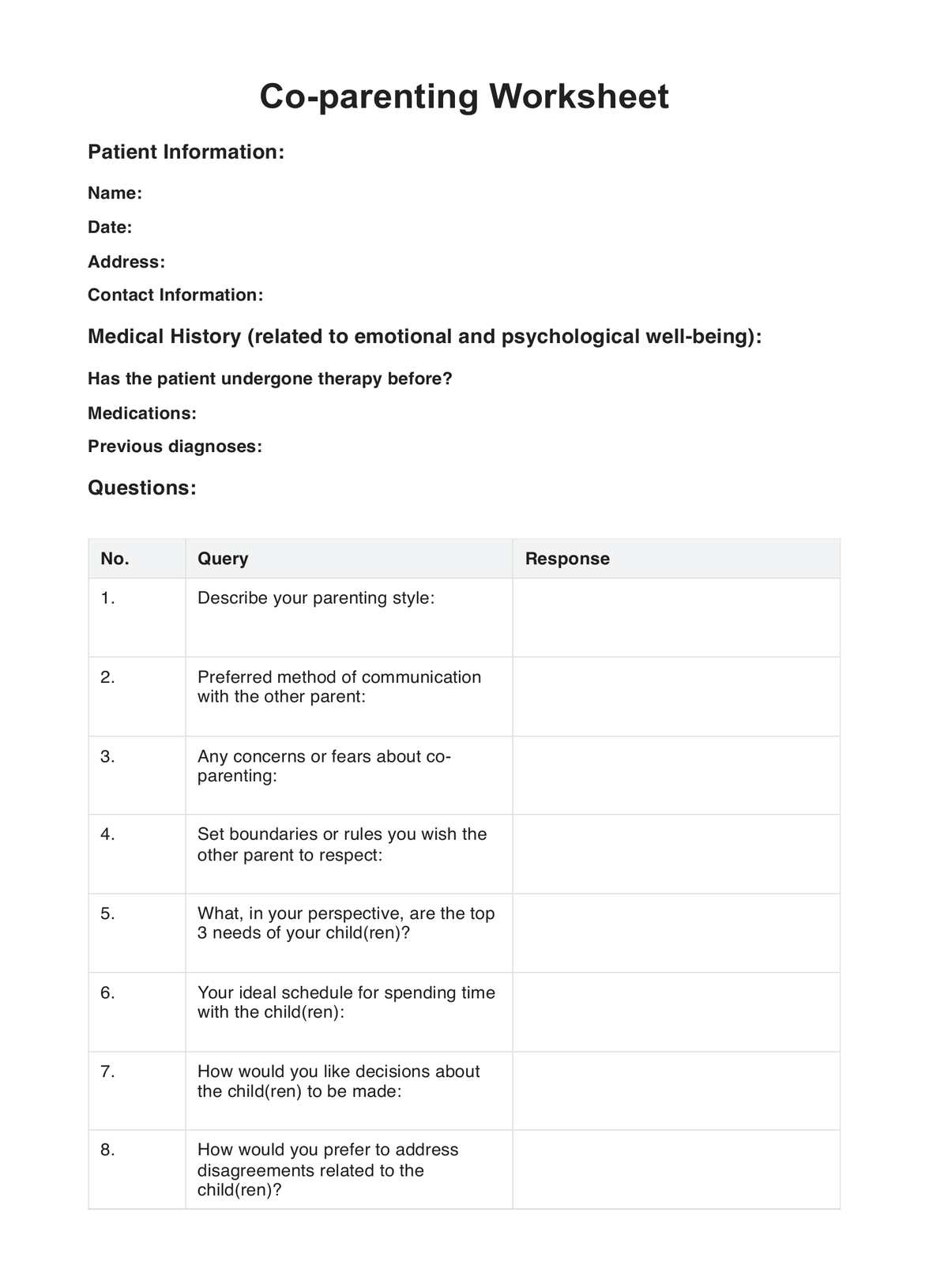
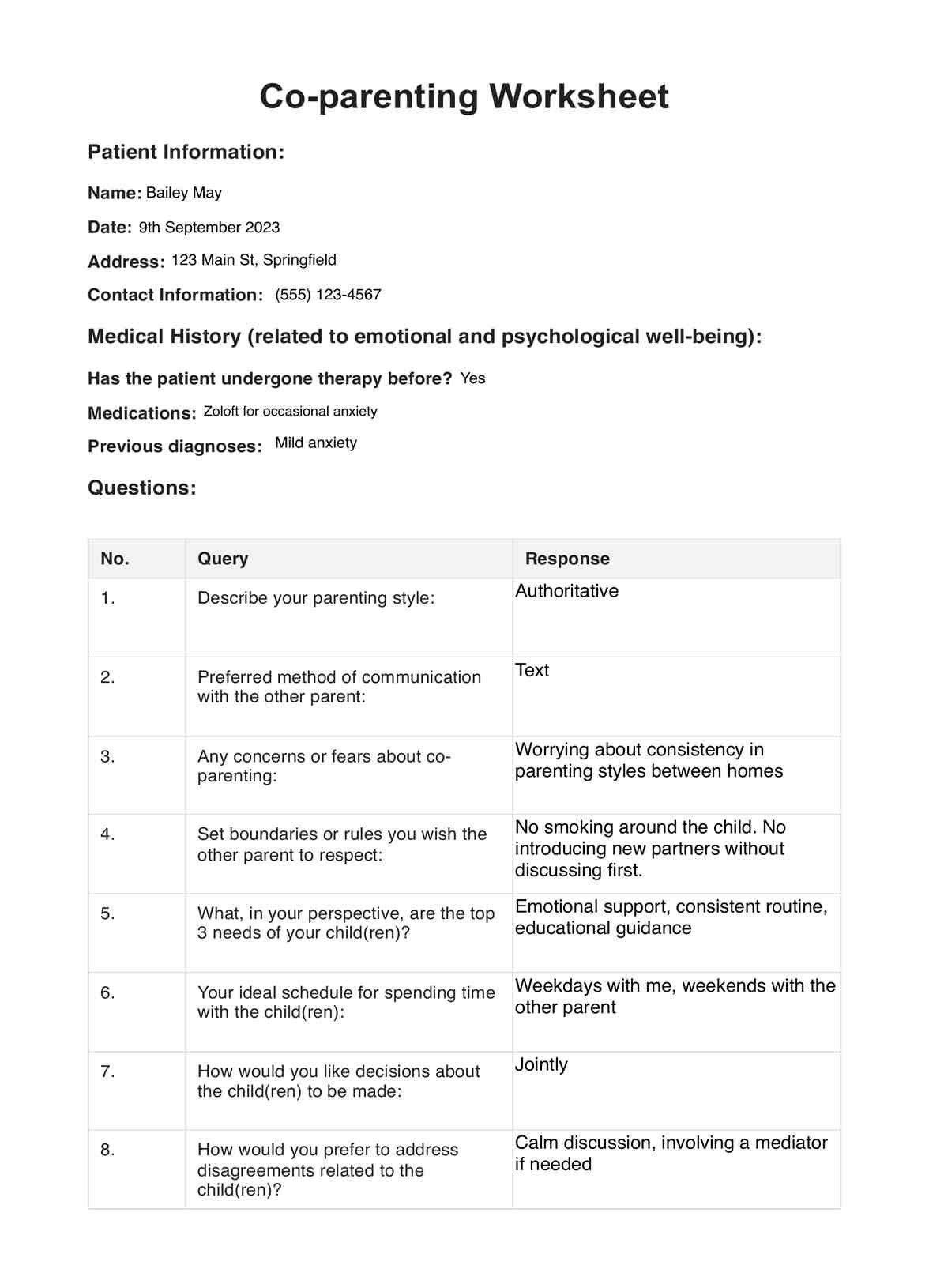

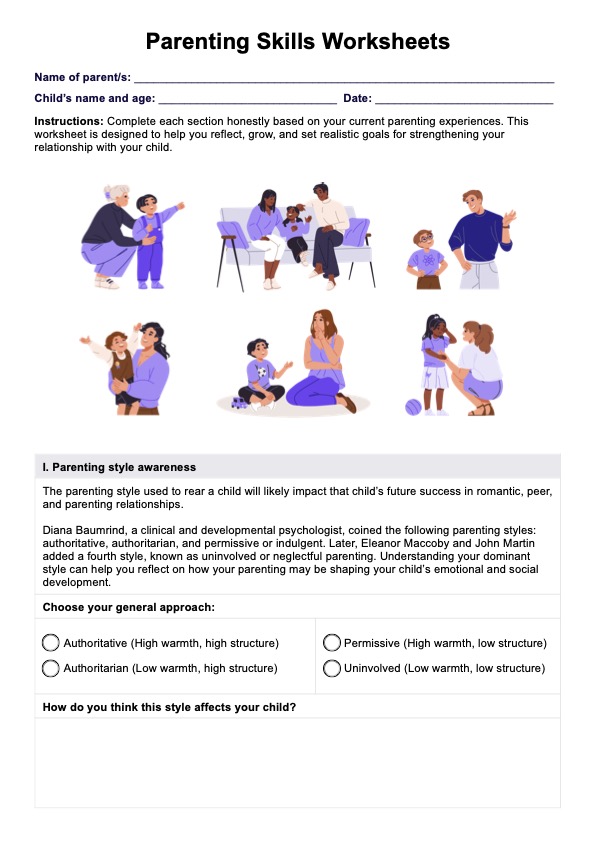
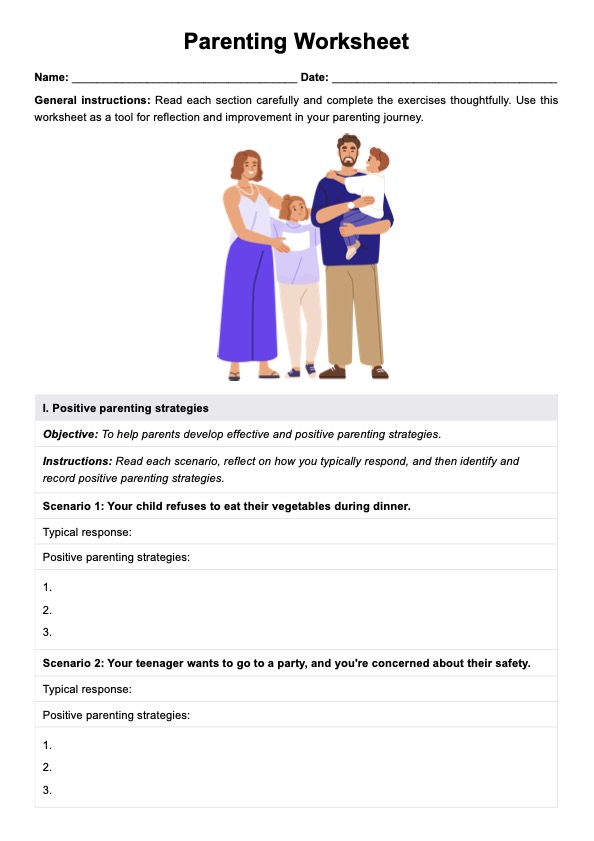












-template.jpg)


